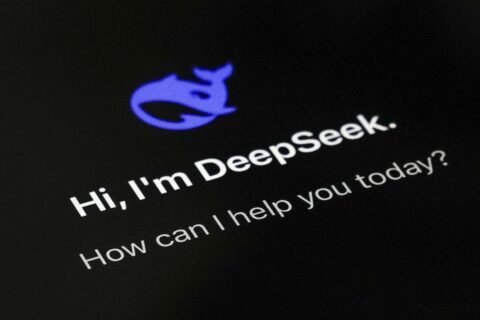A Strategic Leap—With Trade-offs
DeepSeek’s decision to accelerate the release of its R2 AI model has positioned it at the bleeding edge of AI innovation. With its enhanced contextual awareness, faster response times, and adaptive learning capabilities, DeepSeek R2 is ambitious in both scale and strategy.
But pushing such a powerful tool to market ahead of schedule comes with risks—and how DeepSeek handles these could shape the future of AI deployment strategies.
Key Takeaways
Early release may impact adoption rates due to technical instability.
Competitive pressure is driving faster release cycles—but may come at the cost of refinement.
Technical glitches and integration issues are likely with accelerated timelines.
User feedback will be vital in guiding model evolution and improvement.
DeepSeek’s early deployment sets a precedent for agile AI development, balancing innovation with reliability.
Understanding the DeepSeek R2 Release
Core Features and Technical Highlights
| Feature | Language Model Specs | Capabilities |
|---|---|---|
| Context Understanding | 150B parameters | Enhanced multi-turn reasoning |
| Custom Training Modules | Adaptive learning mechanisms | Domain-specific performance tuning |
| Multilingual Interaction | Over 80 languages supported | Faster, culturally relevant dialogue |
These core features form the backbone of the R2 model. They reflect an intent to build a flexible, scalable language model that adapts to a wider range of enterprise and developer needs.
Why Launch Early?
Market advantage: Reach users before rivals like OpenAI release next-gen models.
Early feedback loop: Identify issues through real-world usage.
Investor pressure: Accelerate revenue streams and prove product-market fit.
“Speed is the currency of innovation—but stability is the cost,” remarked one AI strategist at a global tech roundtable.
Early Reactions from the Community
Initial feedback is a mix of optimism and caution.
“The model’s core reasoning capabilities are solid, but the UI needs polish.” – AI Weekly
Users appreciate the performance on language generation tasks.
Developers cite documentation gaps and complex onboarding.
Interface lags and minor usability quirks dominate discussion threads on GitHub and forums.
Technical Challenges of an Early Launch
Accelerating an AI model’s release naturally surfaces unresolved architectural issues.
🐞 Potential Bugs and Glitches
Erratic responses to edge-case prompts
Crashes during high-load inference or multi-modal tasks
Inconsistent behavior in real-time applications like chatbots or voice assistants
🔌 Integration Challenges
Incompatibility with existing APIs
Latency bottlenecks in hybrid cloud environments
Misalignment with older enterprise stack components
“Early adopters often serve as unpaid QA teams,” noted a DevOps lead during a tech conference in Shenzhen.
Example Incidents:
A retail chatbot built on R2 repeatedly crashed during flash sales.
A legal tech firm reported inconsistencies in multilingual contract analysis.
These cases underline the importance of sandbox testing environments prior to full deployment.
User Experience Concerns
💬 Real-World Feedback from Beta Testers
Beta testers have praised R2’s flexibility—but flagged areas where UX friction undermines productivity:
| Reported Issues | Impact |
|---|---|
| High latency during code execution | Slower feedback loops for developers |
| Dense interface design | User confusion, especially for new adopters |
| Error messages lacking guidance | Troubleshooting becomes time-consuming |
“The model is powerful, but it doesn’t yet feel intuitive.” — Early tester via Medium
🎯 UX Recommendations:
Introduce interactive tooltips and visual aids
Provide sample workflows and error walkthroughs
Streamline the dashboard for priority tasks
Improving usability will be essential to avoid alienating non-technical users.
Competitive and Financial Pressure
A Crowded Battlefield
DeepSeek R2 enters a competitive market that includes:
OpenAI’s GPT-4
Anthropic’s Claude 3
Google Gemini
Each of these rivals has massive infrastructure and institutional partnerships.
Financial Considerations
Faster monetization could backfire if bugs erode trust.
Emergency hotfixes may inflate operational costs.
Reputational risks if R2 underperforms compared to expectations.
DeepSeek’s early release may strategically attract attention—but it also opens the door to criticism if expectations aren’t met.
Strategic Implications: Risk vs. Reward
Early deployment of R2 represents a calculated risk:
Pros: First-mover advantage, rapid feedback, developer excitement
Cons: Technical instability, user dissatisfaction, maintenance overhead
The question is not whether issues will arise—but how DeepSeek responds to them.
If the team can prioritize rapid patching, agile documentation, and responsive community engagement, R2’s early entry could still pay dividends.
Conclusion: Navigating the Challenge of Early Innovation
DeepSeek R2 is undeniably ambitious—and its early release sets a bold tone for the company’s product philosophy. While it introduces next-gen features and expansive performance upgrades, the technical and UX risks of rushing to market remain clear.
For DeepSeek, the challenge is to balance agility with reliability, listen to its early user base, and continue evolving the model with transparency and responsiveness.
How it handles R2 will define how developers, businesses, and the broader tech ecosystem perceive DeepSeek as a long-term AI partner.
FAQ
❓ What is DeepSeek R2?
DeepSeek R2 is the latest generation of DeepSeek’s AI model, built with enhanced reasoning, faster response times, and improved contextual understanding.
❓ Why was R2 released early?
DeepSeek prioritized an early launch to gain market visibility, receive real-world feedback, and stay ahead of competitors in the rapidly evolving LLM landscape.
❓ What are the known challenges?
Technical glitches, API integration issues, and user experience inconsistencies have been reported by early adopters.
❓ How will DeepSeek improve R2?
Through regular updates, real-time bug fixes, user community feedback loops, and detailed documentation rollouts.




